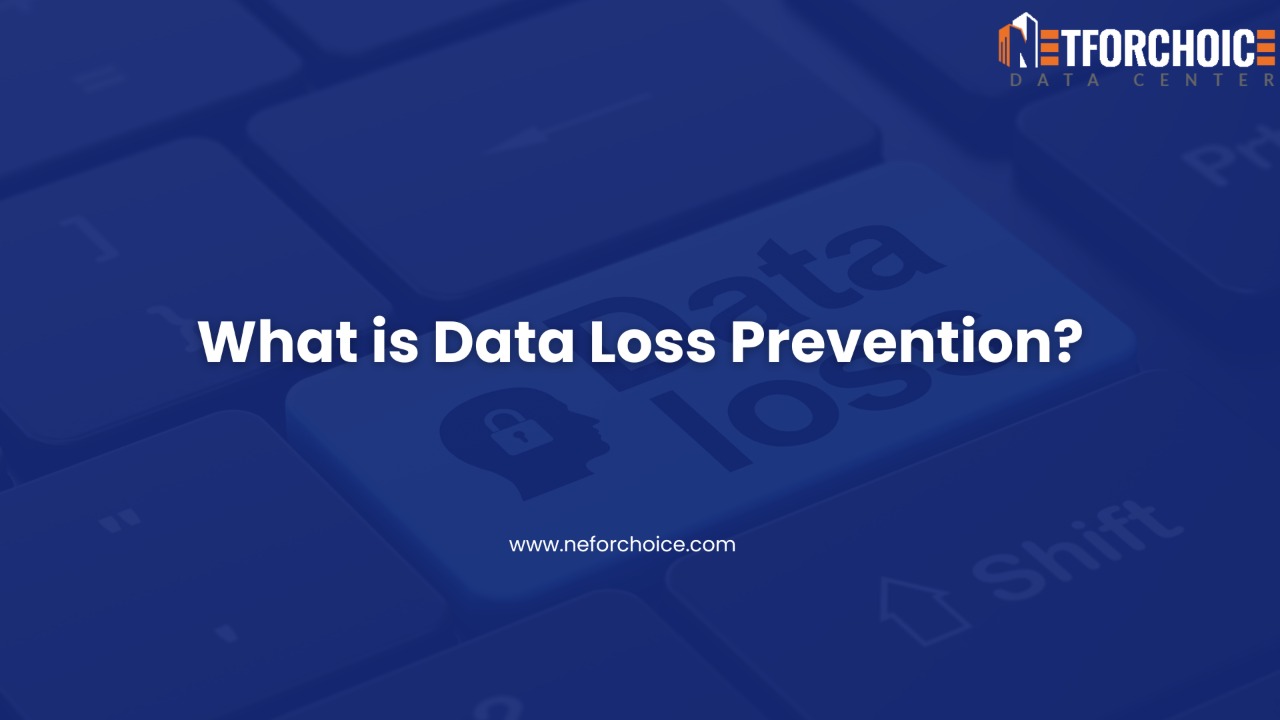Your data is more valuable now than it has ever been in the digital-first corporate environment. Every piece of data, from financial records and customer information to employee details and secret source code, has the power to either help or hurt your company. However, what if such information is inadvertently erased, leaked, or ends up in the wrong hands?
Data Loss Prevention (DLP) can help with it. We’ll explain data loss prevention in this blog, including what it is, how it operates, its advantages, and why even small firms should give it top priority. This handbook is for business owners and IT professionals who want to learn more about protecting sensitive data.
What is Data Loss Prevention?
A security strategy called data loss prevention, or DLP, assists businesses in recognizing and avoiding possible data breaches, leaks, or illegal access to private data. DLP is essentially about protecting your data, whether it is being shipped, used, or stored.
It makes use of technologies, procedures, and monitoring strategies to make sure that private information (such as credit card numbers, medical records, and intellectual property) doesn’t accidentally or maliciously escape your company.
DLP solutions are frequently employed for:
- Stop sensitive data from being shared without authorization.
- Continue adhering to regulations (such as GDPR, HIPAA, and PCI-DSS).
- Guard your intellectual property.
- Lower the possibility of insider threats
How Data Loss Prevention System Works
Sensitive information is categorized and tracked throughout an organization via a data loss prevention system. When specific requirements are satisfied, it implements security measures that limit or prevent the transfer of this data.
- Identification & Classification of Data
After scanning papers, emails, databases, and other types of data, the system classifies the information according to its level of sensitivity, such as “confidential,” “restricted,” or “public.”
- Policy Enforcement
Security guidelines or policies are established, such as “Prevent any file that contains credit card numbers from being sent to external email addresses.”
- Monitoring & Identification
The system continuously monitors data in use (being accessed or altered), data at rest (being stored), and data in motion (such as emails) to identify any activity that breaks from security guidelines.
- Preventive Measures
The DLP tool may quarantine the file, encrypt the data, notify an administrator, or prohibit the action when a policy is activated.
Even if a human error happens (such as attaching the incorrect file to an email), the DLP software can detect it before the damage is done due to this automatic method.
Benefits of Using Data Loss Prevention
Businesses of all sizes can benefit greatly from implementing a DLP solution. Let’s examine why this security layer is now necessary rather than optional.
- Prevents breaches of data
DLP lowers the possibility of devastating breaches by continually monitoring and preventing sensitive data from being stolen or made public.
- It safeguards intellectual property.
DLP protects trade secrets and research & Development activities for businesses that rely on private data (such as software code, designs, and strategies).
- Ensures Adherence to Regulations
Businesses must adhere to compliance standards because of the strong data privacy rules in force. DLP facilitates the automation of the financial and personal data security process.
- Reduces Insider Dangers
Insider threats, whether intentional or unintentional, can be challenging to identify. DLP solutions keep an eye on user activity and highlight any unauthorized access or transfer of private information.
- Establishes Trust with Customers
Customers will feel more at ease knowing that your company takes data security seriously.
Use Cases in the Real World: Why Businesses Need DLP
- Medical Care
In order to maintain HIPAA compliance, a hospital utilizes DLP to stop patient records from leaking. A barrier or alert is triggered by any attempt to upload or email health data.
- Banking Services
DLP is integrated by a bank to track staff devices and email activities. Before leaving the network, any file that contains tax information or account numbers is encrypted.
- Small Companies
The user database of any SaaS firm, no matter how tiny, must be secured. By monitoring and limiting unwanted access, a cloud-based DLP system helps the business adhere to international data regulations.
Best DLP Solutions for Small Businesses
To install DLP, you don’t require a security team worth millions. Startups and expanding companies can benefit greatly from a number of scalable and reasonably priced DLP technologies.
To install DLP, you don’t require a security team worth millions. Startups and expanding companies can benefit greatly from a number of scalable and reasonably priced DLP technologies.
Conclusion
Data loss has become a daily danger in the era of remote work, cloud computing, and digital transformation. Whether it is a targeted cyberattack or an accidental email, your organization cannot afford to let confidential information slip through the cracks.
When you implement a data loss prevention system, protecting your business, reputation, and future is more crucial than simply following the law.
The best DLP solutions for small organizations are easily accessible, and the advantages of using DLP are so significant that now is the perfect moment to take action.
Frequently Asked Questions (FAQs)
- What is Data Loss Prevention?
“Data Loss Prevention (DLP) uses a set of processes and tools to prevent unauthorized access, misuse, or loss of private information.”
- How does a data loss prevention system operate?
DLP systems keep an eye on data while it’s being used, stored, and moved. They categorize information, implement rules, and respond to infractions by blocking, warning, or encrypting.
- What benefit does Data Loss Prevention offer?
By protecting sensitive data, DLP prevents insider threats, guarantees compliance, guards against data breaches, and increases customer trust.
- Which DLP options are best for small businesses?
Among the best options are managed services like Netforchoice Cloud DLP, which is perfect for SMBs, Microsoft Purview, and Digital Guardian.
